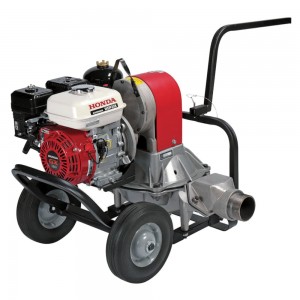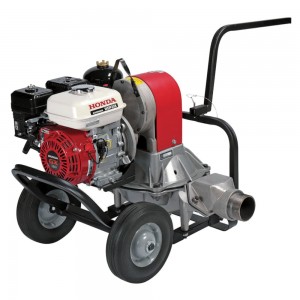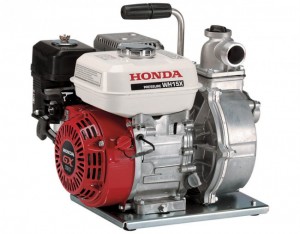 Diaphragm pumps work differently than impeller designs, which means they need to be used differently from more common water and trash pumps. Here’s what you need to know to correctly set up, start and use Honda’s WDP30 Diaphragm Pump.
Diaphragm pumps work differently than impeller designs, which means they need to be used differently from more common water and trash pumps. Here’s what you need to know to correctly set up, start and use Honda’s WDP30 Diaphragm Pump.
Before Use
Do a quick check for any signs of leaking oil or gasoline, as well as any other signs of damage. It’s also a good idea to check the tightness of bolts on both the pump and engine.
Inspect the hoses for signs of damage, and make sure the sealing washers and strainer are in good condition.
Check the oil level, fuel level and condition of the air filter. Oil Alert will automatically shut the engine off if the oil level is too low. If the engine stops suddenly, this is the first thing you should check.
Setting Up the Hoses
Instead of spinning an impeller, a diaphragm pump moves a flexible diaphragm up and down, pulling and pushing water. Check valves on the inlet and outlet of this chamber keep this water flowing in one direction. Water is pumped in pulses, and the mechanism reciprocates like a piston in an engine. This shakes the pump and makes the hoses jump around. It’s a good idea to anchor the ends of the hoses and to keep an eye on the pump while it’s running. The pump can start walking if it’s moving fluids with a high solids content.
A strainer must be fitted to the end of the suction hose. The holes may look unusually large if you’re used to other pumps: the pump design lets the WDP30 handle solids up to 2.4 inches in diameter.
Honda rates the WDP30 using both dynamic head, a theoretical maximum pumping height, and static head, the maximum height difference you can have between the inlet and outlet in real-world conditions. Static head is just 25 feet. If the pump is primed, the suction head can be up to 24 feet. Priming time is shorter than other pumps at just 20 seconds with a 20-foot head. If water isn’t exiting the discharge hose after 30 seconds or so, check the placement of the suction hose inlet and the seals around the pump inlet and outlet.
This pump should not be used to move potable water. Using it to pump corrosive liquids including sea water and mine runoff will damage the pump while moving flammable liquids can cause a fire or explosion.
Priming
The pump only needs to be primed if the suction head is more than 16 feet. To prime the pump, remove the cap on top of the air cushion chamber, directly above the pump inlet. Pick up the suction hose near the inlet and lift it at least one foot off of the ground. This keeps the priming water from flowing out of the inlet. Pour one gallon of clean water into the chamber. Lower the hose, then screw the cap back onto the chamber.
Starting and Stopping
Controls for the throttle, choke and fuel valve can be found below the air cleaner box, while the ignition switch is located on the starter housing on the opposite side of the engine.
To start the engine, open the fuel valve. If the engine is cold, close the choke. The throttle should be just past the slow position. Turn the ignition switch on, then pull the starter grip. The engine should fire up in one or two pulls. Open the choke as the engine warms up. Once the engine runs smoothly with the choke fully open, the throttle can be set to get the right pumping speed.
The engine can be stopped by turning the ignition off, but it’s easier on the pump if you first close the throttle and let the engine return to idle speed first.
After Use
The pump casing needs to be flushed with water to remove any leftover sediment. Disconnect the suction and discharge hoses, then insert the end of a garden hose into the pump inlet. Turn on the hose. Once the water pouring out of the outlet is clear, remove the hose. Drain any remaining water from the pump housing by lifting the inlet side of the pump or by rolling the right side wheel onto a wood block.
Get the Parts You Need Straight from Your Browser
Hondalawnparts.com carries the complete line of parts and accessories for Honda Engines and Honda Power Equipment. Our site lets you browse through our selection of hoses and pump accessories, or you can use our search engine to see factory diagrams and descriptions for your pump so you can be sure you’re ordering the part you need. We can ship anything from small parts or major components to any address in the U.S. or Canada.


